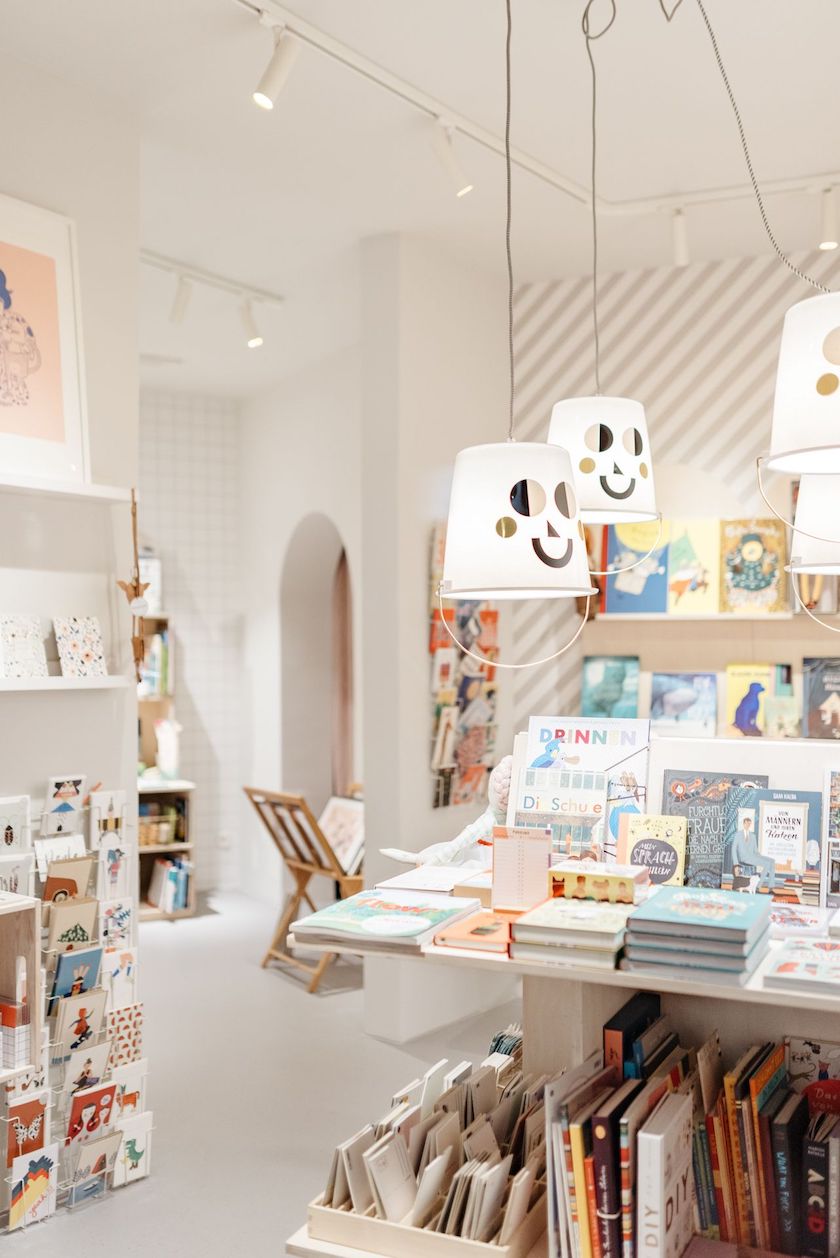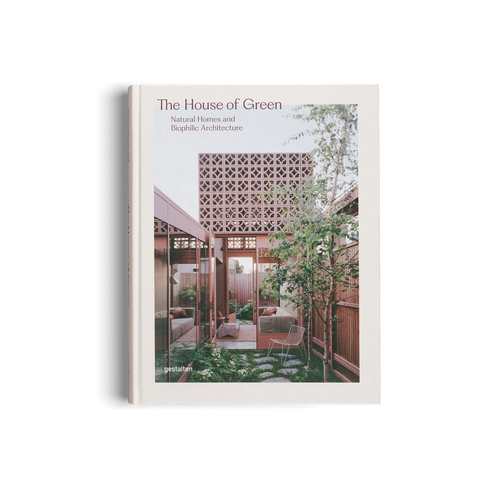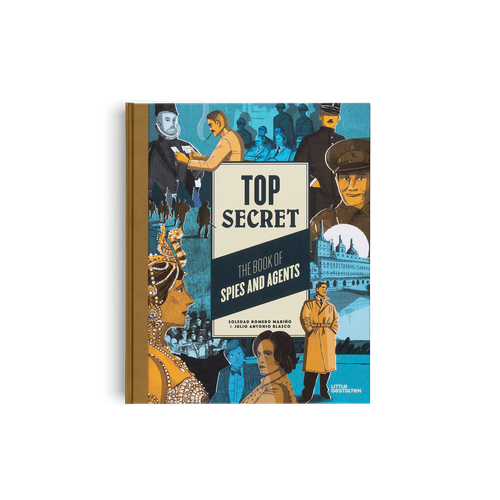
10/2020 architecture & interior
Read in German
When January ignited the start of a new decade, a year ticketed to mark the beginning of a modern roaring twenties, the world’s imagination was gripped by futuristic innovations from 5G to a breakthrough in AI human-level intelligence set to change humanity. Undoubtable advancements were on the horizon, but the technological revolution was also forced to share the stage with the resurgence of print media in 2020. After nearly two decades of decline since the turn of the millennium, print’s miraculous comeback stunned digital kingpins.
Back in March, we reported that Germany’s book market grew for the first time since 2012, backing a rising trend from 2018 when over 29.9 million people bought at least one book. It signaled that the analog rebellion had breached the mainstream, from printed books to the vinyl records, there was hope for delicate industries up against digital dominance. Then the coronavirus pandemic became a reality in nearly every corner of the planet, deepening the retail apocalypse being felt in exacerbated cities, towns, and high-streets. To understand how this year's developments affected the resurgence, we spoke to Ulrich Dombrowsky of Buchhandlung Dombrowsky and Ines Sutter of BUCHSTÄBCHEN about their journey so far and the challenges 2020 presented them.

The award-winning Buchhandlung Dombrowsky is in Regensburg and renowned for its adult and children literacy. Ulrich and the team are captured outside the store, which won the German Bookstore Award from 2015 to 2018. (Photo: Florian Hammerich)
Can you tell us how Buchhandlung Dombrowsky came into being and the history of the store?
Ulrich: The bookshop was founded by me in 1983. I had just completed my training as a bookseller and was eager to start my own business. In the first years, it was an alternative bookstore that kept with the times. A lot of networking, a lot of green ideas, feminism, the fight against the recycling plant in Wackersdorf, environmental protection, and alternative food later—this phase ended with the fall of the wall, the opening to the East. From 1990 onwards, Dombrowsky became a literary bookstore with books for adults, children, and young people. At the same time, my event activities began: in 31 years, well over 1000 events of various formats were organized and initiated by us on the stages of the bookshop and the city of Regensburg. For the past two years, we have also been offering regular readings for children in a cinema, where the images from the books are projected onto the big cinema screen and the authors themselves are present. This series is called "Floh im Ohr im Ostentor" (Flea in The Ear in The East Gate) because we wanted to put a flea (create noise) in the children's ears with these Saturday afternoons and because the cinema is located at Regensburg's Ostentor.
A special feature of the bookstore is the customer magazine: Together with six similarly oriented bookstores in Germany, Austria, and Switzerland, we published the magazine ‘der 5+’ twice a year. It is almost a literary newspaper that we fill ourselves. It features contributions from authors, publishers, artists, interesting figures in German-speaking society. And of course with reviews of our literary favorites. We offer the magazine is free of charge. Also, once a year we publish a small booklet with these bookshops, showing texts that never existed before, written by renowned authors. It is a great honor for us to be part of this group.
What makes the store special?
Ulrich: The atmosphere! We have made our bookstore the third place (second home) to others. It starts with the feeling that you are in your extended living room. Warm light, solid wood shelves in multiplex design, a stage, many different seating arrangements, extremely competent staff, meetings at eye level were all important. Service, advice, cultural commitment, and customer proximity are the criteria that led the Minister of State for Culture Grütters to award us the 'German Bookstore Prize' for four years in a row.

The bookstore is one of eight bookstores in Germany, Austria and Switzerland that is one of the so-called 5+ bookstores. Twice a year, it publishes a recommendation magazine under its own direction. (Photos: Simon Gehr (left), Florian Hammerich (top right), and Thomas P. Widmann)
How do you make your book and publisher selection?
Ulrich: Our program is hand-picked, we select each title individually. From some publishers we have complete programs, we pick the raisins, other publishers we don't carry at all. Because quality is our most important selection criteria, not only in terms of content but also in terms of production. That's why we also carry the range of books offered by Büchergilde Gutenberg, the oldest German book club, which does truly outstanding work.
No criterion in the store is any bestseller lists for us. Of course, we also have books there that are on these lists. But to offer them on a 'bestseller wall' would not at all meet our expectations. By the way, we make our bestsellers ourselves. By reading books, falling in love with them, and therefore being able to recommend and sell them enthusiastically.
How challenging was 2020 as a bookstore?
Ulrich: For us, it was a great opportunity. We were in the bookstore for the duration of the six-week lockdown. Thanks to our loyal customers, we were able to increase our sales during this time (and since the end of the lockdown). Our customers knew that it was important for them to continue shopping with us. And even if the doors had to stay closed, we had the opportunity to get their books to the people through bicycle courier, company car, and parcel services. We worked twice as hard during this time. But when you get your chance, you have to take it. We're going into the winter season relatively relaxed and considering the purchase of air filters, which would of course be important, especially in connection with the events. December will certainly be a challenge because, with the limited number of customers, it will hardly be possible to match the previous year's sales. But we are again relying on our delivery service and not least on our online store, which has been going through the roof since the lockdown.

Owner Myriam Kunz inside BUCHSTÄBCHEN, which won a 'German Bookstore Award' in 2019. Originally an architect, Kunz opted to change career paths and open a bookstore in 2017. (Photos: Annette Kuhls and Julia Sang-Nguyen)
Can you tell us the story of how BUCHSTÄBCHEN came into being and the history of the store?
Ines: The founder of BUCHSTÄBCHEN, Myriam Kunz, opened the first store in 2016 on Senefelderstraße, a relatively quiet side street in the west of Stuttgart. From the very beginning, events and exhibitions were held in the store. The premises was charming but very limited in space. Thus, at the end of 2017, a pop-up store was opened in central Stuttgart eight weeks before Christmas. It was an exciting space in a passageway for temporary use alongside many other young start-ups. In 2018, the opportunity for a significantly larger store area of approximately 120 square meters at Bismarckplatz, a well-frequented pedestrian junction in the western district of Stuttgart, became apparent.
With the move in February 2019, BUCHSTÄBCHEN doubled and the existing concept of ‘bookshop, workshops, gallery’ could be further expanded. Before COVID-19, the event space held readings by various authors such as Stefanie Höfler, Thorben Kuhlmann, and Katja Seide. Parallel to this, exhibitions with the original works from illustrators Anna-Katerina Jansen, Nele Palmtag, and Julie Völk were held. With the expansion, we were able to offer a fairytale hour every second Saturday, and once a month a meeting of the reading club ‘BUCHSTÄBCHEN-Freunde.’ At these meetings, books are exchanged, read out to each other, and sometimes an author would drop-in. The children could experience these personalities up close, get an insight into the way writers work, and have a conversation with them.
What makes the business unique?
Ines: Different details contribute to the special atmosphere of BUCHSTÄBCHEN. The first thing that catches the eye when you enter the store is certainly the interior design. Myriam, the owner, is an interior designer who developed store concepts for Hugo Boss for many years and later co-directed the Stuttgart architectural practice VONM for a decade. This is evident in the overall design of the premises. The most important thing, which usually becomes clear when looking in the shop window, is the selection of books and non-books. We house 4,000 titles, which in itself is nothing unusual, but the special feature is that we have a large part of the books in the store only once. There are wonderfully lovingly designed carefree children's books, but also titles on more serious topics such as death, abuse, violence in the family, and war. Other focal points are diversity, feelings, nature conservation, and sustainability for different age groups. In addition to great new publications, we also carry an unusually large number of backlist titles. The great variety of books is often reflected in the length of time customers spend with us. Many come in and want to browse, to be inspired.
For this purpose, Swantje Hinrichsen's sophisticated graphic concept has been in place since the BUCHSTÄBCHEN was founded. Her vision created the logo, a clear form, and color concept, she also designed the renowned BUCHSTÄBCHEN eyes. These have become the distinctive feature of the letter book and can be seen in every gift box.

Toys, picture books, gift items bring the inside alive while the colors invite you to browse from the outside. (Photo: Annette Kuhls and Julia Sang-Nguyen)
How do you make your book and publisher selection?
Ines: We are happy to do so at trade fairs, where we can get an overview, pick up the books, and exchange ideas with the publishers. This is not possible in 2020. That's why this year we're increasingly looking at the websites of the various publishers and of course the previews. The content of a book, graphic design, and also the style is decisive. As soon as we have the books, we look at them and every day a book goes home with our children. It is always exciting, sometimes even surprising, what they say about it. Afterward, we discuss it with the team and then we decide whether to place this title in the store.
How challenging was 2020 as a bookstore?
Ines: Very challenging on many different levels. In spring 2020, we had our online store, which was at its limits with around 1000 items. With this store, we "bumped up" the lockdown period. From one day to the next we turned the store into a packing station. Orders that came in through different channels were put together, packed, invoiced, and sent on their way. For the customers from the neighborhood, the transport box of the BUCHSTÄBCHEN's load wheel was converted, utilizing an exchange of goods and cash that took place. We were also fortunate that two young people from the neighborhood agreed to deliver smaller deliveries by backpack and skateboard in the west of Stuttgart. All other orders were picked up by the parcel courier.
At the same time, all events were canceled. Our newly printed calendar of events was 32 pages—a lot of work for nothing. Besides, our children were home of course and wanted their care to be arranged. We couldn't take them to the store for hygiene reasons and social distancing rules. All in all, many balls had to be kept in the air at the same time and there were plenty of evenings that we sank into bed dead tired and still couldn't get a wink of sleep.

The store already had an online platform and local delivery service when the lockdown was introduced, but they also enlisted a skateboarder as an extra pair of delivery hands. (Photos: Annette Kuhls and Julia Sang-Nguyen)
Did you create new ways to interact with readers during the pandemic?
Ines: Yes and no! All in all, we were already well-positioned with our Instagram and a simple but separate online store. However, it became clear that the new online store, which was already being planned and developed at that time, was really necessary. Fortunately, we can finance the project with the prize money we received for the first place as 'Best Bookstore' at the German Bookstore Award in autumn 2019. A nice anecdote from the time of the lockdown is that we noticed through the large store windows in the store when customers happily took their ordered books from the transport box in front of the door, a beam of joy and now and then a kissing hand was exchanged through the glass pane. Wonderful!
Delve into a world of beautiful bookstores and the personalities behind them through Do You Read Me? Available in German and English.














